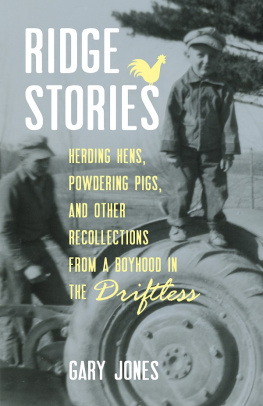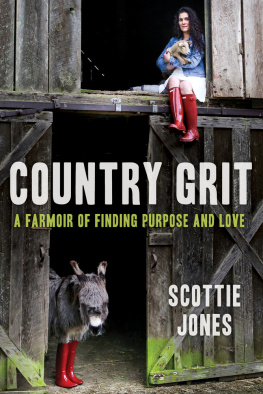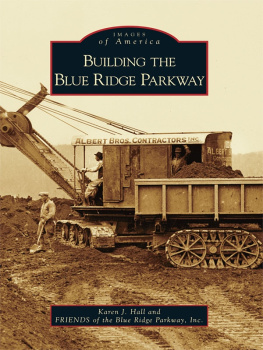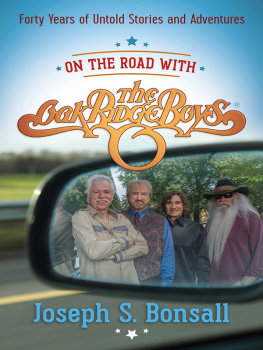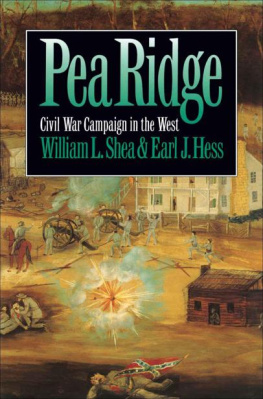Jones - Ridge Stories
Here you can read online Jones - Ridge Stories full text of the book (entire story) in english for free. Download pdf and epub, get meaning, cover and reviews about this ebook. year: 2019, publisher: Wisconsin Historical Society, genre: Non-fiction. Description of the work, (preface) as well as reviews are available. Best literature library LitArk.com created for fans of good reading and offers a wide selection of genres:
Romance novel
Science fiction
Adventure
Detective
Science
History
Home and family
Prose
Art
Politics
Computer
Non-fiction
Religion
Business
Children
Humor
Choose a favorite category and find really read worthwhile books. Enjoy immersion in the world of imagination, feel the emotions of the characters or learn something new for yourself, make an fascinating discovery.
- Book:Ridge Stories
- Author:
- Publisher:Wisconsin Historical Society
- Genre:
- Year:2019
- Rating:3 / 5
- Favourites:Add to favourites
- Your mark:
- 60
- 1
- 2
- 3
- 4
- 5
Ridge Stories: summary, description and annotation
We offer to read an annotation, description, summary or preface (depends on what the author of the book "Ridge Stories" wrote himself). If you haven't found the necessary information about the book — write in the comments, we will try to find it.
Jones: author's other books
Who wrote Ridge Stories? Find out the surname, the name of the author of the book and a list of all author's works by series.
Ridge Stories — read online for free the complete book (whole text) full work
Below is the text of the book, divided by pages. System saving the place of the last page read, allows you to conveniently read the book "Ridge Stories" online for free, without having to search again every time where you left off. Put a bookmark, and you can go to the page where you finished reading at any time.
Font size:
Interval:
Bookmark:

Ridge Stories
Ridge Stories

Herding Hens, Powdering Pigs, and Other Recollections from a Boyhood in the Driftless
Gary Jones
WISCONSIN HISTORICAL SOCIETY PRESS
Published by the Wisconsin Historical Society Press
Publishers since 1855
The Wisconsin Historical Society helps people connect to the past by collecting, preserving, and sharing stories. Founded in 1846, the Society is one of the nations finest historical institutions.
Join the Wisconsin Historical Society: wisconsinhistory.org/membership
2019 by Gary Jones
For permission to reuse material from Ridge Stories (ISBN 978-0-87020-923-9; e-book ISBN 978-0-87020-924-6), please access www.copyright.com or contact the Copyright Clearance Center, Inc. (CCC), 222 Rosewood Drive, Danvers, MA 01923, 9787508400. CCC is a not-for-profit organization that provides licenses and registration for a variety of users.
The front cover image showing Gary Jones as a boy on his family farm is courtesy of the Jones family.
A number of the essays in this book appeared in a different form in earlier publications, including the Milwaukee Journal, the Milwaukee Sentinel, Cityside (Milwaukee), and the Ocooch Mountain News (Gillingham, WI). They have been edited and updated with new material for this volume.
Cover design by Ryan Scheife, Mayfly Design
Typesetting by Wendy Holdman Design
23 22 21 20 191 2 3 4 5
Library of Congress Cataloging-in-Publication Data Names: Jones, Gary, 1944 author.
Title: Ridge stories : herding hens, powdering pigs, and other recollections from a boyhood in the Driftless / Gary Jones.
Description: Madison : Wisconsin Historical Society Press, [2019]
Identifiers: LCCN 2019010818| ISBN 9780870209246 (e-book)
Subjects: LCSH: Jones, Gary, 1944-Childhood and youth. | Richland County (Wis.)Social life and customs. | Dairy farmsWisconsinRichland County. | Country lifeWisconsinRichland County. | Richland County (Wis.) Biography. | Driftless AreaSocial life and customs. | Driftless AreaBiography.
Classification: LCC F587.R4 J66 2019 | DDC 977.5/75dc23 LC record available at https://lccn.loc.gov/2019010818
To my wife, Lu, who not only encouraged me to write this book, but has heard the stories so many times that she knows them as well as I do, and to my granddaughter Julia, who inherits these stories and may pass them along to her children.
Contents
Does the wind always blow this way? a traveling salesman once asked my father.
No, Paw replied. Sometimes it blows that-a-way.
Wind was a fact of life during my boyhood on our ridge farm. Fields of alfalfa and oats rippled in the wind like ocean waves, and during summer when the haymow was empty, the barn creaked like a schooner struggling in high seas. Elm trees frantically waved their limbs as if fearing they might be yanked out by their roots, and my mothers laundry on the clothesline flapped like panic-stricken semaphores.
Sometimes when I crossed the road between our house and barn, I considered putting rocks in my pockets as ballast.
The winter wind blew drifts of snow. Because country road banks bristled with brush, the hilltops filled with snow, subsequently blocking the passage of school buses and milk trucks. When I was in the eighth grade and read John Greenleaf Whittiers poem Snow-Bound, I felt that I could relate.
Our farm was located on a high spot on Pleasant Ridge offering panoramic views of ridge fields separated by forested valleys, and at night distant yard lights mingled with the twinkling stars overhead. And just as County Highway D divided our farm to the north and south, Si Breese Lane marked the western boundary between our eighty-acre homeplace in Willow Township and the one hundred in Rockbridge, both in Richland County, part of Wisconsins Driftless Area.
But the wind we sometimes cursed enabled my greatgrandfather Isaac Johnson to farm the land. Because the closest spring was at least a mile away in any direction, the only water that I knew as a child was pumped from a well, once powered with a readily available source of energy: the wind. My great-grandfather had topped the white pines on our lawn to allow the windmill full force of the western gales.
His tall hip-roofed barn sat on a basement of stones that had been quarried from a bluff in the night pasture to the south. The barn featured a tin cupolawhich we, like everyone else on the ridge, pronounced KEW-puh-low. This 1917 building replaced the original barn, a log structure that had been moved from the foot of the cemetery and served as a church until the construction of the traditional white church that we saw from our kitchen window.
The classic T-shaped farmhouse, two-story living quarters and single-story kitchen, dated from the 1870s. When I was four, my family, in the spirit of modernism, tore the building down and moved into a remodeled cottage. Outbuildings included a large machine shed and small A-frame hog houses, all contemporaries of the red barn. The round, galvanized-steel government surplus granary, the corn cribs, and the white frame chicken house were added a generation later.
Buildings on Pleasant Ridge farms varied, but each homestead had a windmill.
In 1937, a few years before my birth, power lines brought electricity to the ridge, and our fan blades came down, although the tower remained. In the 1950s when television signals were beamed in the direction of the ridge, my father topped it with an antenna turned by a rotary device in the hope of coaxing snowy TV reception from stations in Green Bay, La Crosse, or Cedar Rapids.
But the advent of satellite dishes rendered the remnant of a windmill useless for any purpose. The tower came down, and eventually the barn, milk house, and silo, along with the outbuildings that had been rendered obsolete by progress and considered attractive nuisances by insurance companies, came down as well. Only the housenow inhabited by strangersremained.
The utility and road maintenance crews have removed all traces of the scenic country drive that once passed our farm. The roadside hickory trees have been cut, as have the wild roses, sumac, hazelnuts, and lilacs. The banks along the road have been graded flat, removing wildflowers and wildlife habitat in the process. Snow drifts less on the road in this Driftless region, where wider roads more easily accommodate snowplows, and tree branches are no longer a menace to high-line wires.
As time passes, fewer remain who remember when todays farming corporations were only eighty-acre farmsteads with a dozen milk cows, or where the now razed one-room schools stood, or the saw mills, or the cheese factories. Many of the remaining farmhouses have become homes for those who commute to their work in towns or cottages for seasonal residents.
And traveling salesmen rarely make house calls.
When my parents retired from farming, I purchased half of the acreage as an investment both emotional and financial. Perhaps the adage is true that while you can take the boy off the farm, you can never take the farm out of the boy.
From the time I was a little boy in bib overalls at the Pleasant Ridge one-room school, I knew that I didnt want to be a farmer like my father, but a teacher like my mother. I enrolled in the school of education at Plattevilles Wisconsin State College and Institute of Technology. In 1966, I became an English teacher at Weston High School, not far from Reedsburg, and married my college sweetheart.
My career was interrupted by a draft notice that sent me to the Army. After my service, I continued my education through the GI Bill, earning both a masters degree and doctorate in English.
Font size:
Interval:
Bookmark:
Similar books «Ridge Stories»
Look at similar books to Ridge Stories. We have selected literature similar in name and meaning in the hope of providing readers with more options to find new, interesting, not yet read works.
Discussion, reviews of the book Ridge Stories and just readers' own opinions. Leave your comments, write what you think about the work, its meaning or the main characters. Specify what exactly you liked and what you didn't like, and why you think so.

